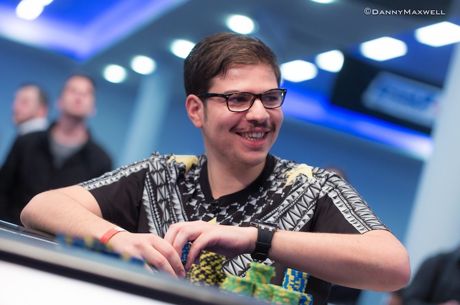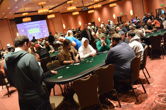Consider Stack Sizes When Deciding Whether to Play Speculative Hands

J?9?. Q?J?. 6?6?.
How do these starting hold��em hands look to you? In particular, how do they look following an opponent��s opening raise preflop? Do you prefer to fold such ��speculative�� hands to raises, or are you more inclined to call (or raise) with them and see what the flop brings?
As a thinking poker player, you��re certainly considering several factors before answering such questions. Among other things, you take into account the position from which the raise is coming, your own position relative to the raiser (and others left to act), and the preflop raiser��s skill level and playing style, just to name a few.
Let��s say you weigh all of these factors and realize three-betting isn��t viable as an option, but it��s essentially 50-50 whether to call or fold with your speculative hand. By speculative hands we��ll include hands like small and middle pairs, suited connectors and one-gappers (and maybe two-gappers), suited aces with small kickers, and big unsuited connectors. What else is there to consider to help you decide?
The ��5-10 Rule��
Going back several years, authors Stewart Reuben and Bob Ciaffone in their book Pot-Limit & No-Limit Poker once shared an easy-to-remember rule of thumb for deciding between calling or folding with speculative hands. The rule was subsequently picked up and cited by many others going forward, with some offering refinements to it as well.
It��s called the ��5-10 rule�� and was proposed by the authors as a guide for making this call or fold decision with a speculative hand �� something to be considered along with position and implied odds (as determined by position, your opponent, the type of speculative hand you have, and other factors).
The rule has to do with effective stack sizes, making them the deciding factor here. The ��effective stack�� refers to the actual amount of chips being risked by each player involved �� in other words, the smallest stack. If you have $200 and your opponent has $150, the ��effective stacks�� are $150 as that��s the most you can win or lose versus such an opponent.
If the size of the bet ��is less than 5% of the effective stacks, you have an easy call,�� write Ciaffone and Reuben. ��If it��s more than 10%, you have an easy fold. Anything in between is a judgment call.��
To give an example, say it��s a $1/$2 NL game, an opponent opens for $7, and it folds to you where you��ve been dealt one of these speculative hands. You have $200 behind and your opponent has a little more than that, making the effective stacks $200. As $7 is less than 5% of that, you can call. If the raise had been to $25, being over 10%, then a fold is in order.
Look at Stack Sizes Alongside Position, Types of Speculative Hands
As you might already be thinking, the 5-10 rule is potentially dangerous if followed blindly without any consideration other than stack sizes. And to be honest, that��s not how it is meant to be viewed �� it��s a guide for looking at stacks that should go along with the other factors like position, playing styles, and so on.
In their book The Math of Hold��em, Collin Moshman and Douglas Zare offer a helpful addendum to the 5-10 rule, one that essentially adds emphasis to the importance of position while also distinguishing between types of drawing hands.
��Position gives you more chances both to bluff and to bet for value,�� write Moshman and Zare. ��Position is more important when you have a suited connector than a low pair, since position is more important when you have a draw, but it��s still valuable when you have a set, or if you have missed and are trying to take the pot away.��
All of which is to say, ��If you are thinking about calling with a low pair while you are out of position, you can��t use the 5-10 rule.��
They go on to suggest that when set mining (for example) ��in modern aggressive games, something like a 3-8 rule would be more appropriate�� �� that is, you can safely call a bet that��s 3% of the stacks or less, fold to a bet that��s 8% or more, and think about it if the bet falls in between that range. However (they point out), it may be that sometimes even calling a bet that��s just 3% of stacks is wrong to do, with folding or three-betting both being better options.
Conclusion
The takeaway here is twofold. First, there is no hard and fast ��rule�� or quick bit of math that can be done that will tell you definitively whether or not to call or fold with your speculative hand.
However, the second lesson is to remember to take stack sizes into account whenever you find yourself contemplating such a call. Look at what you have left and what your opponent has, and do make a mental note of what percentage of the effective stack you��re putting at risk should you call. After all, if you commit 10% of your stack before the flop by calling a raise, then call half-pot bets on both the flop and turn while chasing a draw, the size of the pot will then be more than what you have left in your stack. Are you prepared for the possibility of getting in that deep when making that preflop call?
There are many factors that should affect whether or not to play hands like J?9?, Q?J?, or 6?6?. Effective stack sizes should always be one of them.
Want to stay atop all the latest in the poker world? If so, make sure to get PokerNews updates on your social media outlets. Follow us on Twitter and find us on both Facebook and Google+!









